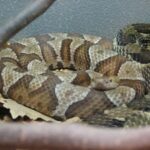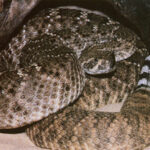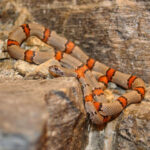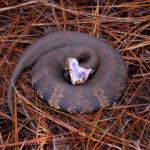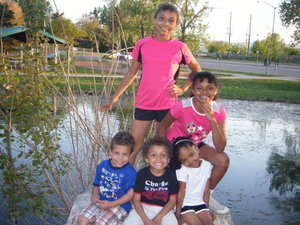“Keeping snakes with children in the house is cruel!”
“Don’t worry, we won’t let the kids hurt the snakes. We’re teaching them to be gentle.”
Some conversation along these lines happens at least once in every snake loving family. Friends and family, especially the older generations, cling to the widespread belief that all snakes are venomous, cruel, and vicious – a poor creature for the household, or in fact, anywhere. For them, the picture of a child holding a long and scaly legless wonder is the stuff of nightmares.
The truth of the matter is that snakes make an excellent educational tool. They are alien to us in their habits and features. Snakes serve an ecological niche. Most are not poisonous, nor do many even possess fangs. Without them, some farms might be overrun with crop eating rodents. What better creature to teach tolerance for life than one so useful, yet so different?
The Risks
Keeping reptiles with children in the home is not without risk. The CDC recommends children under five keep clear of certain animals (Louisiana State University). The list does include snakes. According to both the Center for Disease Control and the American Veterinary Medical Association, reptiles can carry salmonella. However, general risks to children are not as great as that posed by the family dog (CDC 2009). This in no way mitigates the caution required when a family chooses a snake as a pet, but it does put the risks into perspective.
Aside from disease potential, size and attributes of the snake must be considered. Poisonous snakes pose too great a threat for most keepers, especially children. Large snakes, such as reticulated pythons, boa constrictors, and anacondas can become a threat to small children if allowed to escape. In fact, some communities ban them, adding the constraint in their covenants, conditions and restrictions, or CCRs. A proposed ban on nine species of large snakes under the Lacey Act seeks to protect native habitats from invasive species. This may also prevents the release of these animals into neighborhoods (Kurt Repanshek 2010).
The Benefits
Most smaller, non venomous species such as corn snakes and ball pythons are easy to keep. Children have the opportunity to observe and take part in the care of another creature, one without complicated needs. This can become the stepping stone to more difficult responsibilities later.
Children growing up in snake loving homes have a leg up on their herpetologically challenged counterparts. As stated by the University of Florida IFAS extension “Students should not be taught to fear or hate snakes. It is important that programs instill respect for snakes and the important ecological roles they play in the environment, while emphasizing appropriate behaviors that will protect children from potential injury” (University of Florida). Most people are ignorant of the role snakes play in nature, and choose to remain so. Generations of carefully nurtured fear of these reptiles is hard to overcome. Most never make the effort. The child that learns tolerance and understanding of a much hated species may take that lesson further, making tolerance a habit.
Keeping snakes with children can be a safe and enjoyable hobby. Following these tips should help prevent accidents and illness.
Stick to the smaller species. A large boa or anaconda has great appeal for many, but a small child cannot handle or defend itself from such a large animal. Only very experienced handlers should consider these animals as pets, especially in households with children.
Avoid venomous species. These require special licensing, equipment, and enclosures. Ask yourself if it is worth the risk.
Always wash your hands after handling snakes and anything in their environment. Wash from the fingers to the elbows. Wash any equipment and anything the snake touched.
Keep all snake enclosures secure. With very small children, make sure the enclosure is out of reach. Children are as adept at getting into forbidden areas as snakes are at getting out. Be smarter and better prepared than both, and all members of the family will benefit from keeping snakes.
Sources
Louisiana State University “Infants and Young Children”
CDC “Injury Prevention and Control: Home and Recreational Safety
Kurt Repanshek “House Republicans Say Interior Secretary’s Proposed Snake Ban Bad For Business” National Parks Traveler
Steve A. Johnson and Martin B Main “Preventing Encounters Between Children and Snakes” University of Florida
